This blog post goes over the culture and etiquette of eating Indian food with your hands and gives an in-depth how-to for doing so.
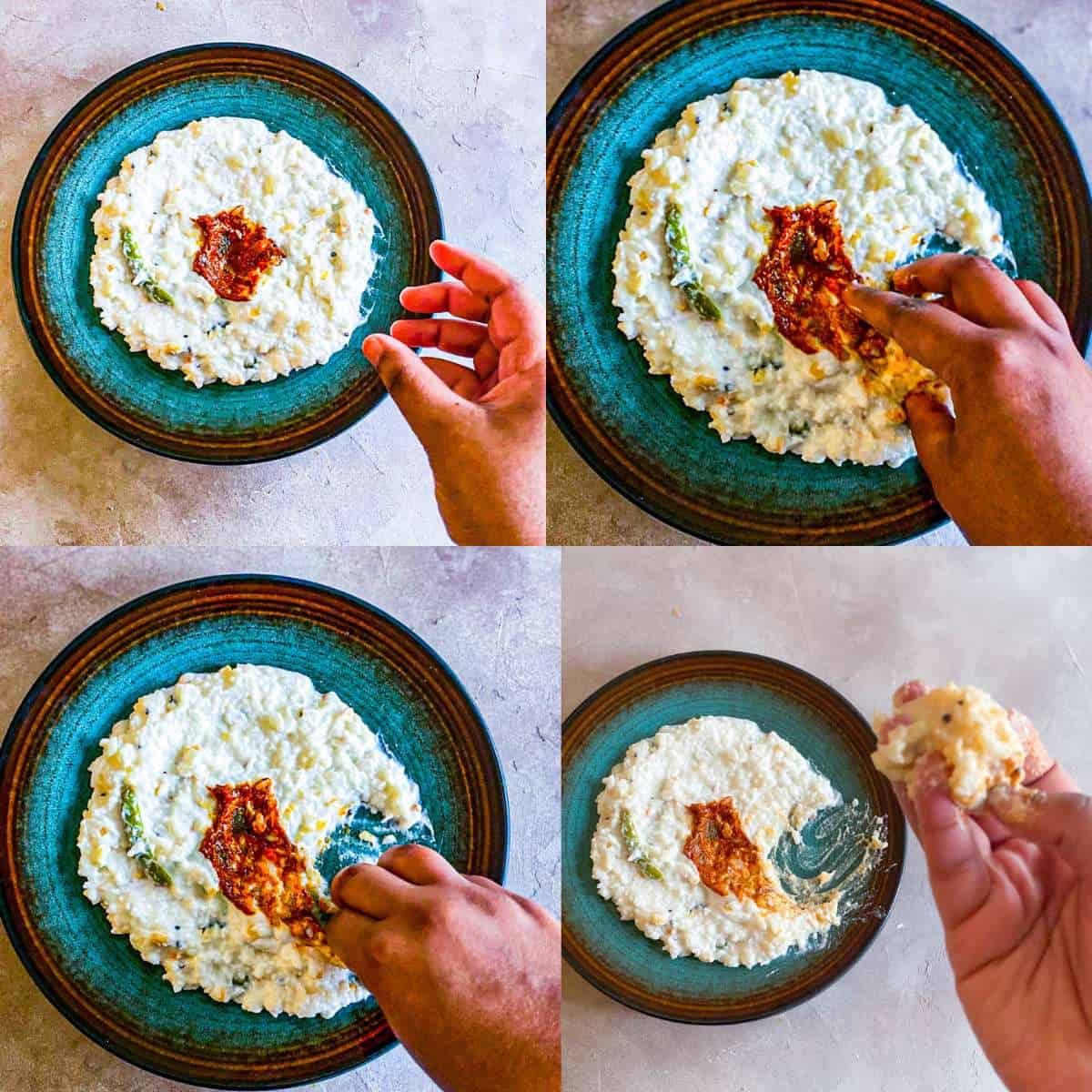
Jump to:
- Introduction
- What part of the world eats with hands?
- What kinds of Indian food should be eaten with hands?
- What kinds of Indian foods aren't eaten with hands?
- Stigma around eating with hands
- Ayurvedic beliefs around eating with your hands
- Rules and etiquette for eating with your hands
- Eating rice: step-by-step photos
- Related posts
Introduction
At some point or another you have probably experienced the sweet satisfaction of eating with your hands. Maybe it was that large, floppy, triangular slice of New York-style pizza which you folded with your thumb and forefinger and aimed like an arrow towards your mouth. Maybe it was that big juicy burger you hoisted with two hands, judging the patty by its sheer heft and resting your fingertips on the buns to see if it had the right fluff to bounce ratio as though buying a new mattress for your tongue to lay on.
For some reason, Western food like pizza or burgers are more "acceptable" to eat with your hands, whereas there is a stigma around eating other food with your hands. This blog post covers eating Indian food with your hands.
What part of the world eats with hands?
Nearly ⅓ of the the world eats with their hands as their primary utensil. The people of India, the Middle East, Africa, and South America all have a culture of eating with their hands.
What kinds of Indian food should be eaten with hands?
- Rotis and flatbreads
- Dosas
- Rice dishes along with any dal, rasam, sambar, thayir, or "liquid-y"- gravy dishes
- Hand held street food like pani puri or samosas
What kinds of Indian foods aren't eaten with hands?
Although you can technically eat any food with your hands, there are some foods that even those who eat with their hands opt for spoons instead. They are:
- Warm desserts or desserts that aren't hand held. Examples: Gulab jamuns or payasam (Indian rice pudding).
- Soups - Although soupy dishes like rasam can be eaten with hands, soup itself is usually consumed from a cup or a slurped via spoon. This is because soup on its own typically doesn't have a carb to help soak it in whereas things like rasam or sambar are eaten with rice or dosas.
Stigma around eating with hands
There is a lot of stigma, especially in the Western world, when it comes to eating food with your hands. So let's address some of the comments/questions/statements that I often hear when folks express concern with eating with your hands:
- Is it sanitary/hygenic to eat with your hands? Yes! Just like when you eat food with utensils or cook, you wash your hands before eating! In Indian culture in particular, the right hand is the one used to eat and the left hand (which is primarily used for the bathroom) is not used to eat.
- Why use hands when you can use advancements like spoons/forks? Your hands are still your best tools. Unlike spoons/forks they give you a lot more sensory cues like how hot or cold the food is and how hard and soft the food is so you have more of a connection with it before putting it in your mouth.
- Eating rice and wet dishes is way easier with utensils. Just like you learned how to eat with spoons or forks as a kid or if you learned to eat with chopsticks, there is a learning curve to eating with your hands. Eating rice dishes and soup-y dishes with your hands comes with practice. Of course, if you are sipping a bowl of soup it is totally acceptable in the culture/custom to use spoons. However, for soupy dishes like rasam it is paired with rice which soaks up the soupy dish and eating that with your hands is an art of managing the amount of soup/rice ratio.
Ayurvedic beliefs around eating with your hands
Ayurvedic beliefs are historical Indian cultural teachings that are often ingrained in how some Indians eat and use food as medicine. In Ayurvedic teachings, it is said that the hands are an extension of the elements. The thumb represents space, the index finger represents air, the middle finger represents fire, the ring finger represents water, and the pinky represents earth. Eating with one's hands brings together these elements. In addition, the Ayurvedic belief is that the stimulation of the fingertips when eating with your hands help signal to your stomach that it is time to eat and helps aid in digestion.
Rules and etiquette for eating with your hands
The rules are pretty simple, but whether one follows them or not shows the difference between a novice and one that regularly eats with her hands. The rules are as follows:
- Wash your hands before and after eating (for obvious sanitary reasons!).
- Always eat with your right hand. This rule originally comes from the fact that you eat with one hand and “clean yourself” with the other. However, in this modern day, I say you don’t necessarily have to choose your right hand - but choose one and stick to it!
- When grabbing more food from the communal pot, use your left hand to handle the utensils. Since your right (eating) hand has your germs, you should use your other (clean) hand to pick up utensils for the communal pot.
- Only your fingers should touch the food. Your palms should be totally clean while eating. This rule ensures that you are pursing the food with your fingertips properly and are therefore able to gracefully guide it to your mouth without spilling. My mom even goes as far as saying that the only the first two segments of your fingers should touch the food.
- Use three out of four fingers besides your thumb to guide the food into your mouth, omitting your pinky. The reasoning here is that it’s just really hard to fit all the fingers into your mouth. So much like you stick out your pinky when drinking a cup o’ tea, you should leave this finger out from the rest when transitioning the food from your hands to your mouth!
- When eating plain white rice, use your fingers to mix and mash the rice and curry together before eating. Really mixing the carb and the other side dishes is important to the final taste of the dish.
- If eating a traditional banana leaf meal, make a well with the rice to hold in the liquidy dishes like dal, rasam, or sambar in the center. Allow the liquids to be absorbed by the rice and mix as stated in rule 6. To learn more about eating on a banana leaf, check out this blog post.
- When eating flatbreads such as chapati or roti with your hands, purse the flatbread with your fingers and use to scoop other side dishes. Beginners simply dip the flatbreads in the liquid-y gravies, but more experienced eaters really know the scooping technique.
- The last thing I want to leave you all with is enjoy the experience! Honestly, it will make any Indian aunty feel so happy to see you try to eat with your hands. Rules one through three are non-negotiable, but other than that, try your best and it will go a long way.
Eating rice: step-by-step photos
Here is a step by step photo depiction of eating thayir sadam - aka yogurt rice with a pickle (in center) - with your hands.
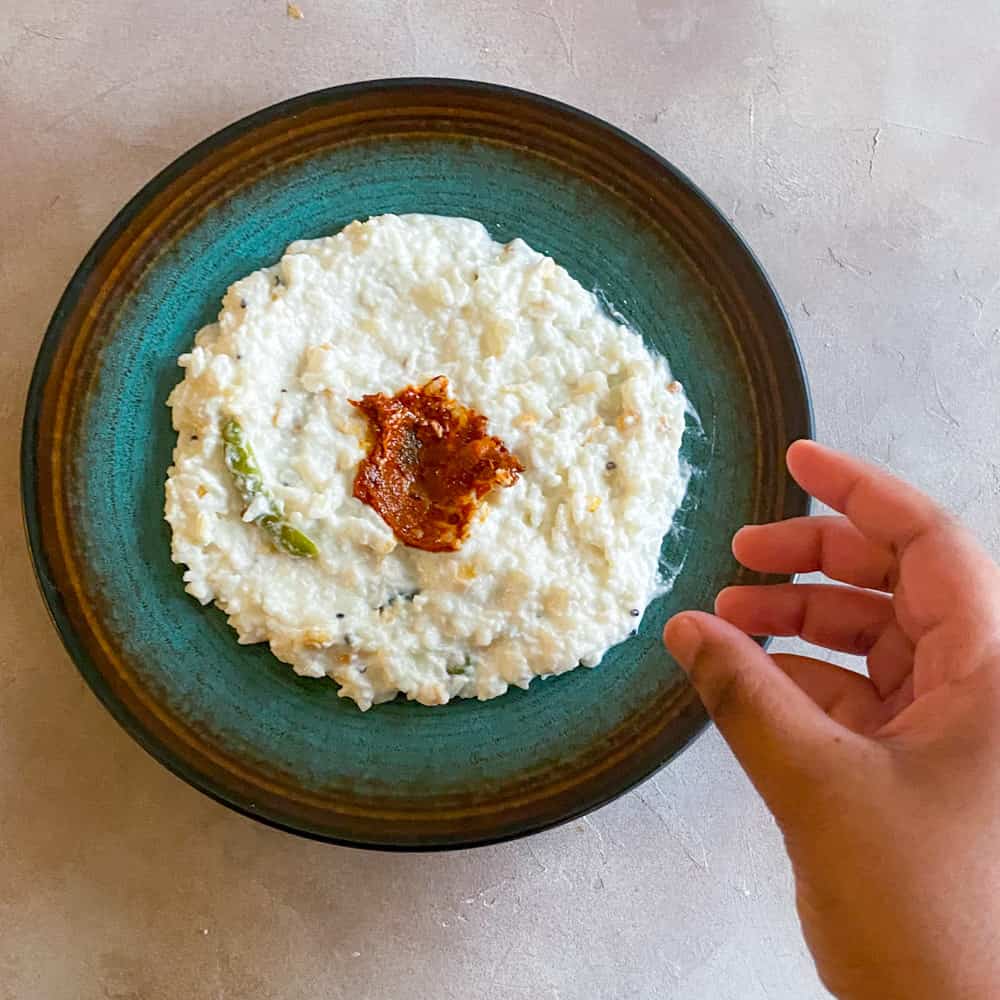
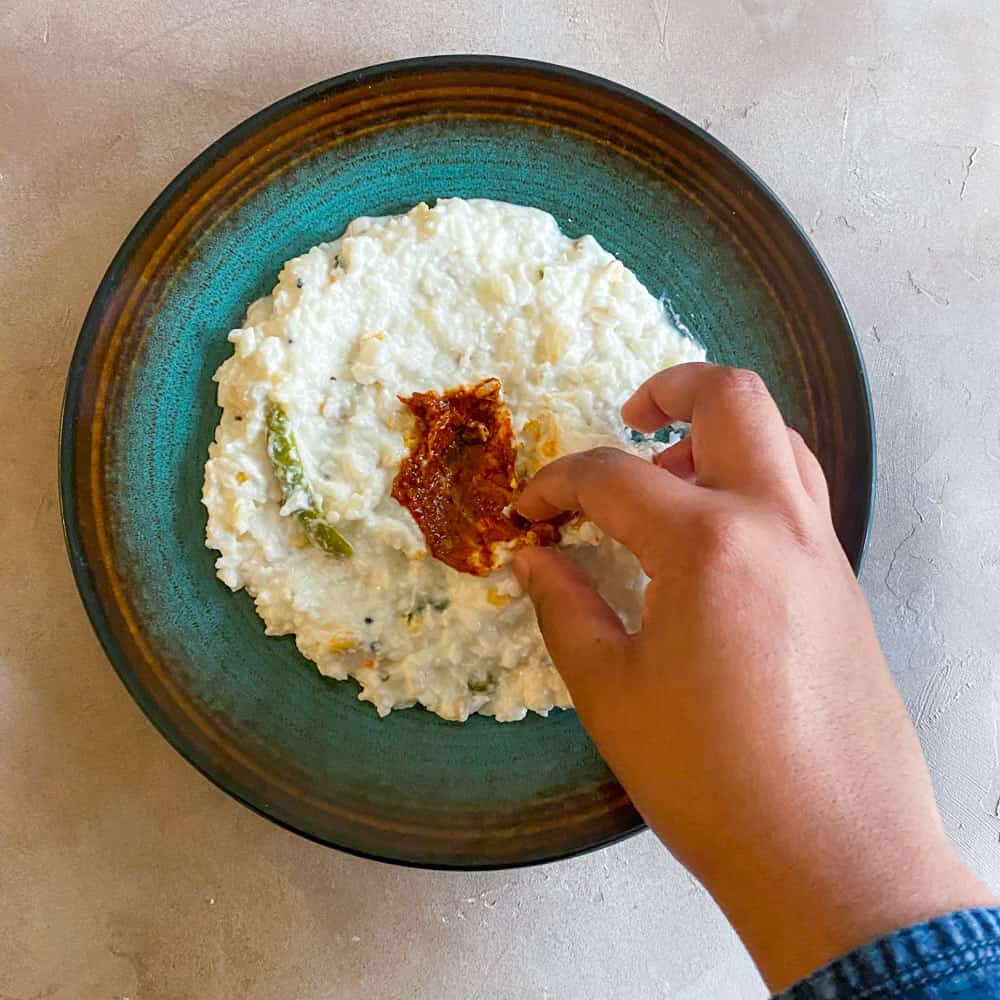
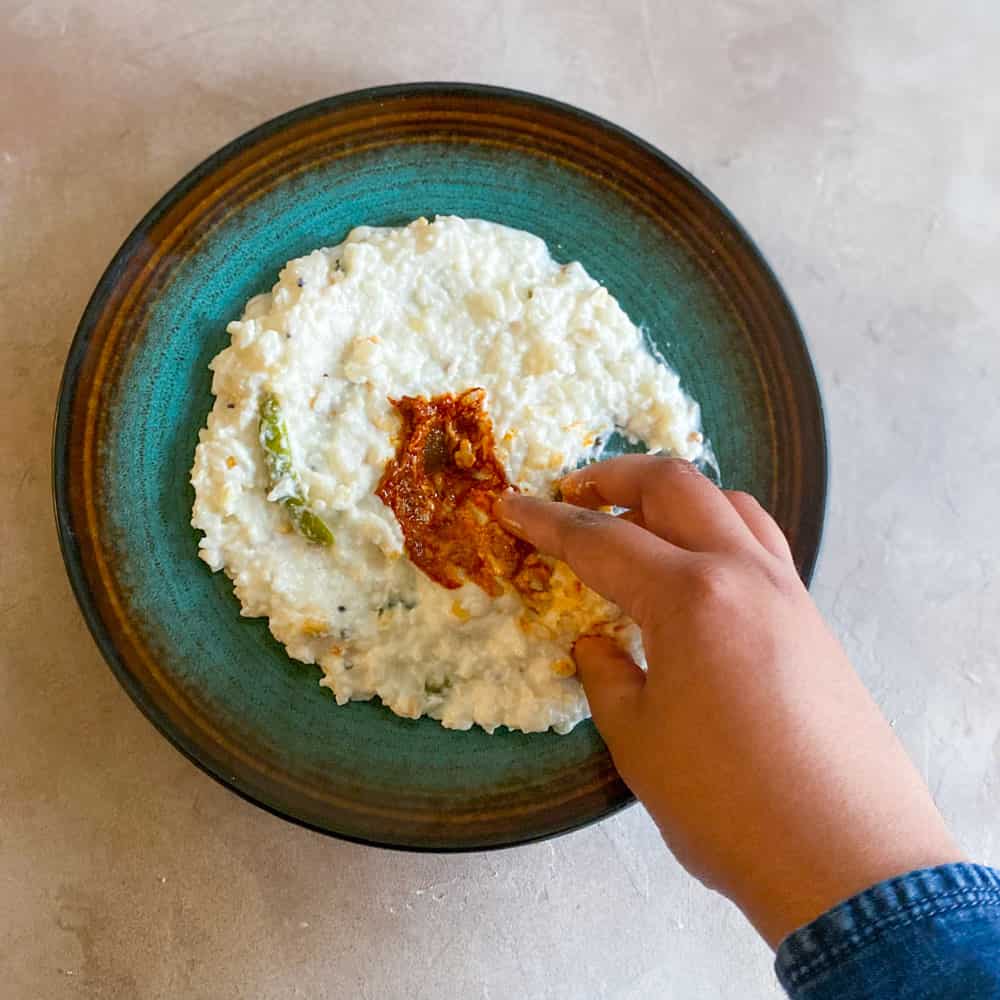
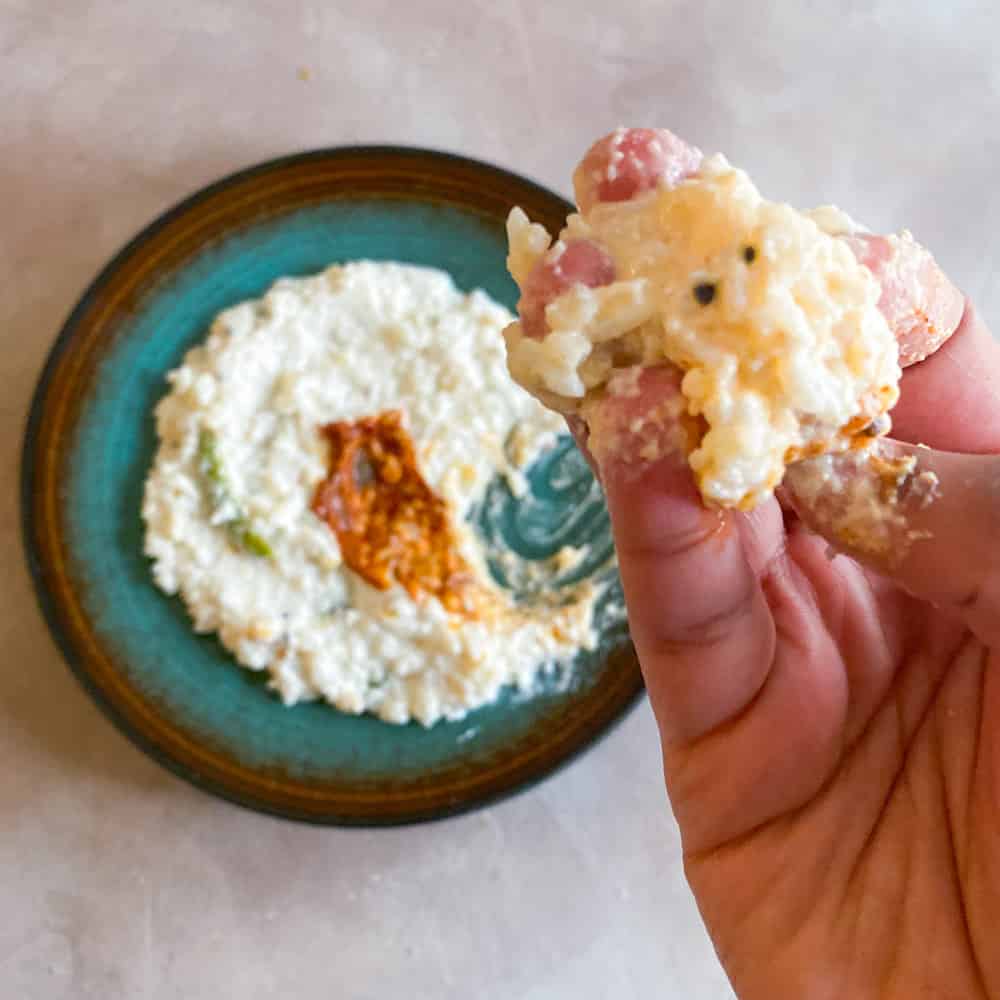
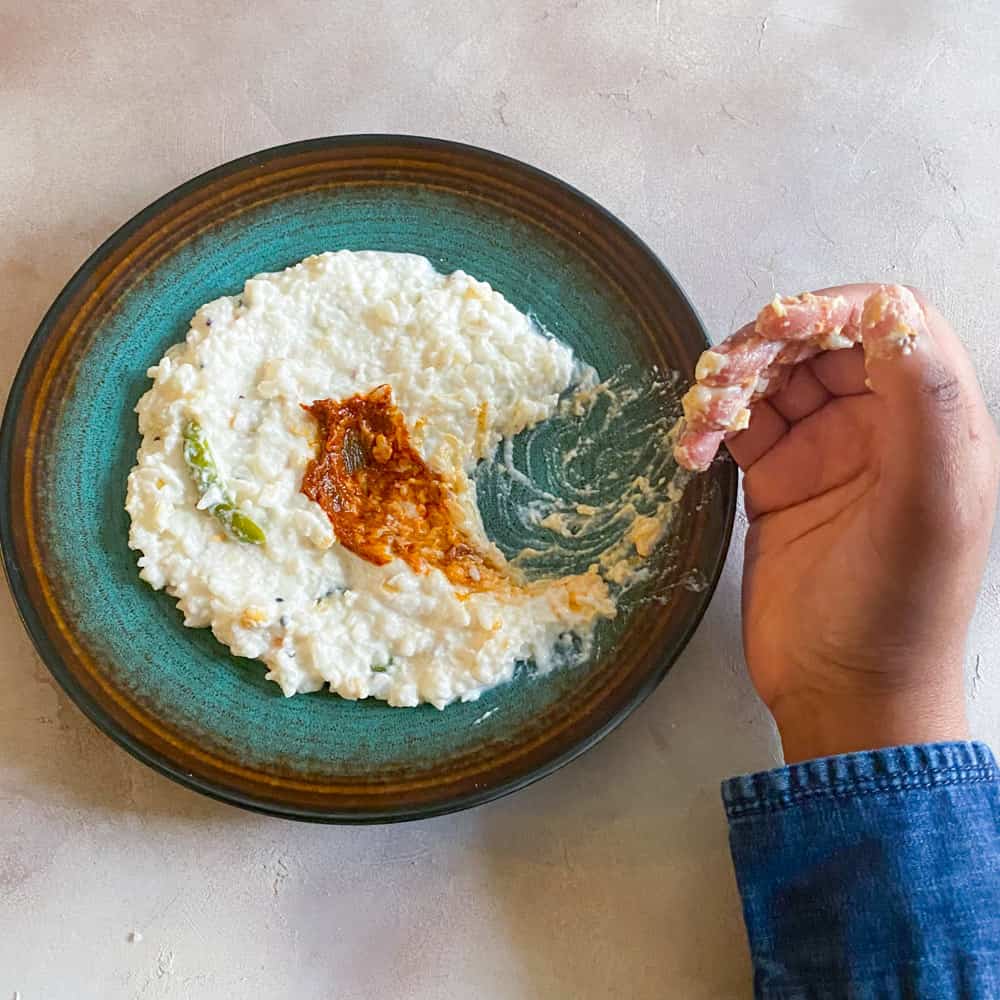
Related posts
I hope you enjoyed this article about eating with your hands! Please leave a comment below letting me know what you thought of this article and if it was helpful to you! I always love hearing your questions and your comments 🙂


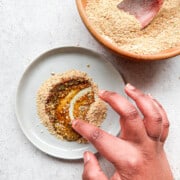
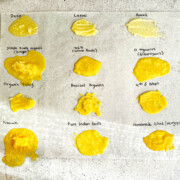
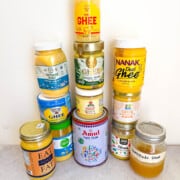
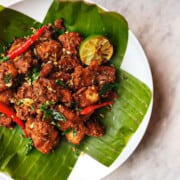
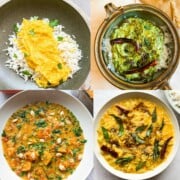
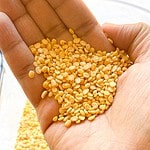


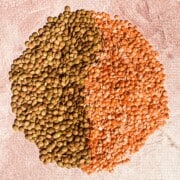
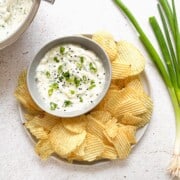
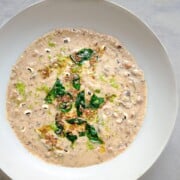
Sheila Crye says
Thank you for your enlightening post about the Indian etiquette of eating with one's hand. I have been curious about how it is done. Here are some more questions about Indian table manners: Does the whole family eat together, or do the children eat separately from the adults? Is the family seated in chairs around a table? Is the mother or the servant preparing flatbread while the family is eating? Is the communal pot passed around the table, or is there an order in which the food is distributed? Are there certain table conversation topics that are preferred, and others that are taboo?
Shri Repp says
This makes me so happy Sheila! I'm so glad that this post was useful. So here are some answers to the questions you asked above. All of these answers are generalizations of course so please keep that in mind...
Does the whole family eat together, or do the children eat separately from the adults? Is the family seated in chairs around a table? A lot of families living in India live in a large joint family with different generations living under one roof. The matriarch of the house (my grandma or my mom) along with a maid if the family can afford it help serve food to everyone. People can also serve themselves and pass food along with their non-eating hand but i've seen that the matriarch is usually present at the table making sure everyone has eaten and making note of what people enjoyed during the meal. If there are small children in the house, they tend to be seated at chairs around the same table with mothers feeding them first before they enjoy their meals.
Is the family seated in chairs around a table? Is the mother or the servant preparing flatbread while the family is eating? The food that is made is often put in large metal tupperware that is designed to keep in heat so the food remains warm while everyone is eating. Food that is kept warm is usually brought out in small quantities from the stove and put on in the tupperware and periodically filled as new family members/guests cycle in for food at the table. This includes flatbread like chapathi (roti) and other grilled flatbread. It's usually made in large quantities and placed in the tupperware right after being made. If it's fried flatbreads like poori, they are usually made fresh and hot by someone in the kitchen and brought to the table either by the matriarch, maid, or someone who has finished eating.
Is the communal pot passed around the table, or is there an order in which the food is distributed? It's usually the guests as well as elders in the house who get given the food first as a sign of respect. However, there are usually many dishes at the table at once, so folks take turns and pass food while serving themselves and sometimes the matriarchs insist on helping serve the food to guests as well.
Are there certain table conversation topics that are preferred, and others that are taboo? I don't think there is a universal answer for this question. I think it varies drastically from family to family 🙂